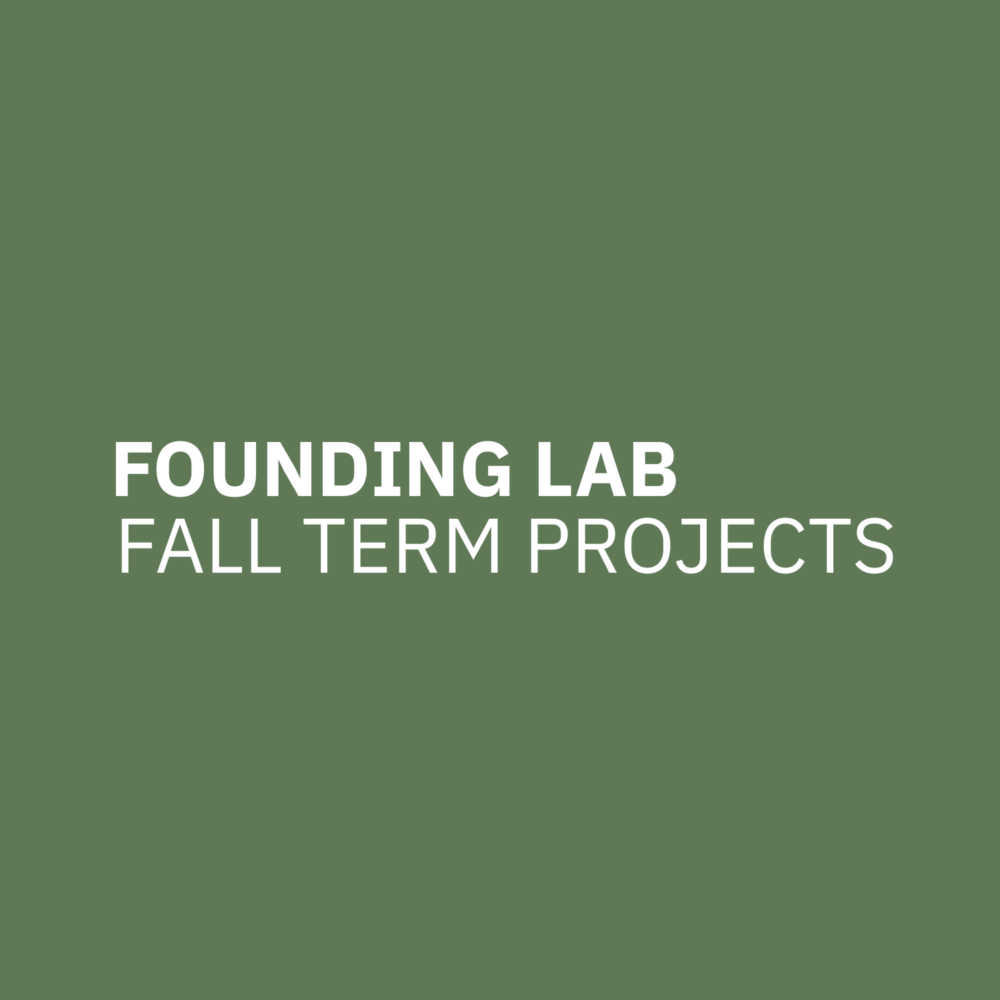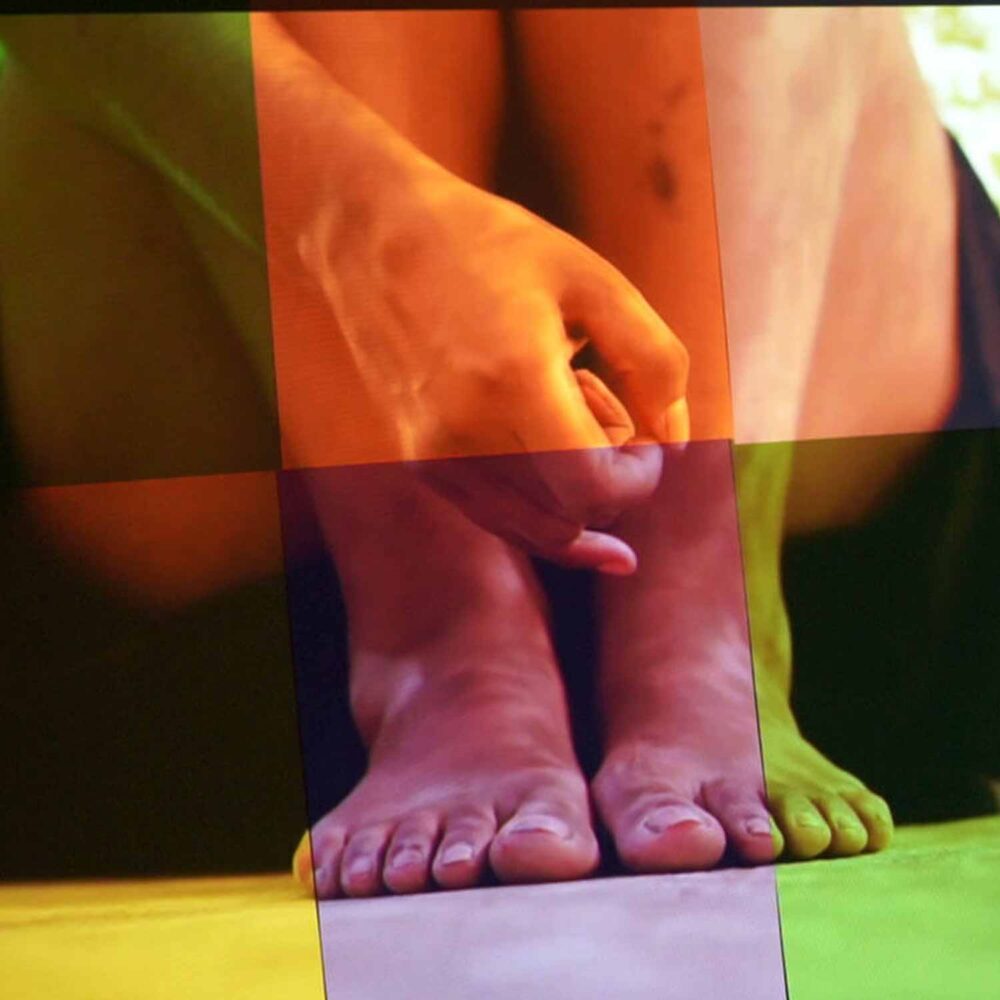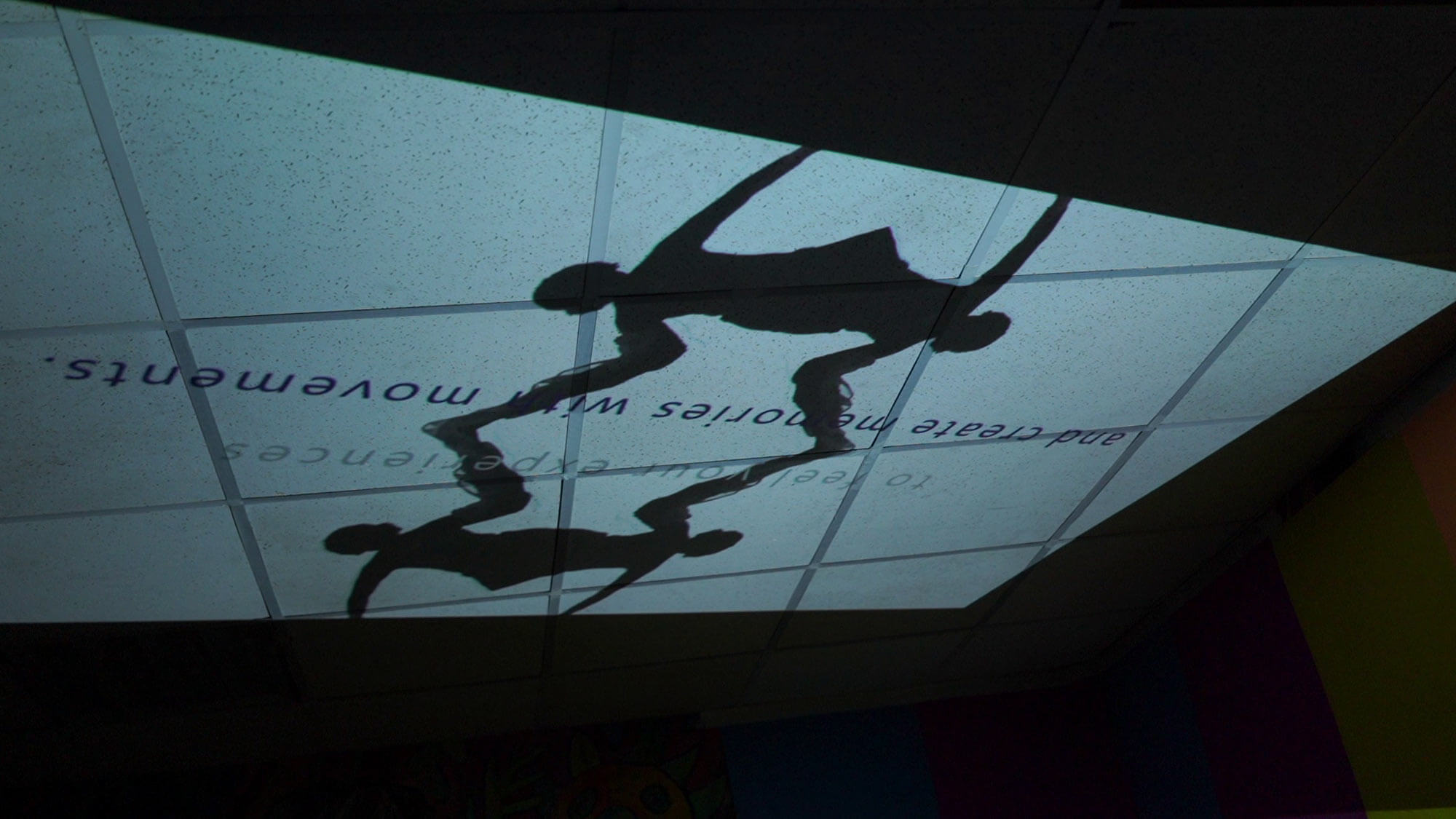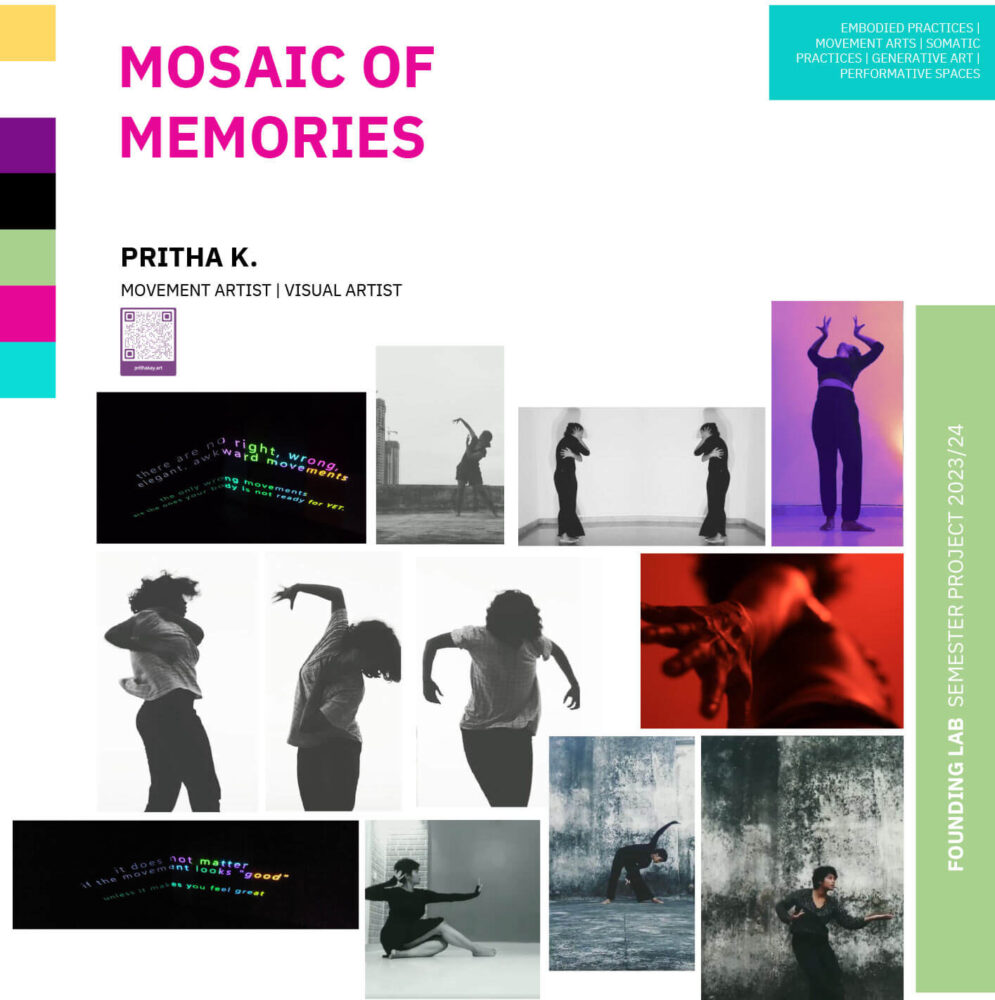

Mosaic of Memories
by
Pritha K.
Concept
For this semester at FOUNDING LAB, my work was based around the question of how we can facilitate the accessibility of embodied practices and movement arts through the integration of multi-sensory experiences and generative art technologies. The realm of movement arts and somatic practices, often perceived primarily as visual and performative, holds a rich, yet underexplored, internal and somatic dimension. These practices often remain confined to the domain of practitioners, discouraging broader engagement from those intrigued by the potential within. In this project to establish inclusive spaces for non-practitioners to explore the kinesthetic potential of their bodies in space, emphasizing the subjective experiential dimension over the external visual aspect. EM aims to create spaces for non-practitioners to explore how bodies can move in space and what is the scope of such a practice and how it feels for their bodies to move in space and focuses on:
How does it feel vs how does it look?
I wanted to research methodologies for transitioning from human-facilitated movement exploration and participatory performances to machine-facilitated collective behavioral spaces. It transcends traditional binaries, such as audience versus performer and artist versus non-artist, to redefine the boundaries of what constitutes performative spaces.
I chose to continue my work involving practice-based research of movement and visual arts, sensor-assisted interactive installation, participatory performance, workshop design and facilitation, designing interactive wearable which generates sound based on movement.
A focus was on creating spaces facilitating artistic expression drawing from lived experiences and making accessible spaces for artistic practices and storytelling. As the project progressed, a primary focus was on practice-led research which prioritised rest and care, breaking away from ableist, productivity-driven indices of progress.
My work revolved around somatic-practices-based movement research drawing from my background of having practiced various forms of movement arts – Indian traditional and modern dances, Yoga, Kung Fu, Butoh, and several others. It was combined with facilitation methods derived from movement therapeutic approaches, behavioural sciences and evolutionary biology focusing on group behaviour and pattern formation. Lived experiences-based methods of movement exploration and storytelling also played an important role.
Between October to January 2023, among regular research, I was able to design and host six participatory workshops and research spaces with various communities and also continue my movement research on camera. Other outcomes included an installation, a sensor-assisted interactive wearable design, and a participatory performance.
Everything that has happened, is happening, and will happen to us, stays with us as memories. Mosaic of memories invites us to feel our experiences and create memories with movements. It is a space for to explore what movement means for us and where it can take us. It is also a space to contemplate, reflect, and react – in movements – to explore moving bodies in the space around us. I explore how our lived experiences take us into movement and share my memories – what moved me- thoughts, words, places, feelings, and senses – and invites individuals to explore what moves them.
Process Reflection
My work revolves around creating accessible spaces for voicing and embodying narratives through movement arts and visual arts. This project was just as multi-faceted and a part of a larger work. Therefore, it was important for me to first have clarity on how I wanted the project to shape up, to have conceptual clarity on the work, and build my vision around it before I could understand where a collaborator’s role fit in. I wanted to make sure I was doing justice to the collaborator’s time and effort and the contribution to the project.
Having been in a space where I was craving to resume my movement research and delving into it as much as possible, it was difficult for me to focus on building the technical aspect of the project – the interactive sensor-driven wearable. Actively seeking collaborations with an extremely creative technologist from Kaunas, Lithuania was an important milestone in the project.
All artistic or scientific or applied research is inherently interdisciplinary in nature – we choose to isolate parts of it in helping build the work. Therefore, this project is also situated in an interdisciplinary space at the intersection of movement arts, visual arts, sensor-driven interactivity, behavioural sciences, participatory arts and pedagogical research.
Having transitioned into practicing artistic research after almost a decade of research in ecology and evolutionary biology, a large part of my work is informed by my background. This project is also informed by research from group behaviour, pattern formation, neuroscience of memory and learning and proprioception.
Artistic choices and decisions played an important role in shaping this project: from the spaces I chose to work with to the participatory nature of the work. I did not choose to create this work for Deep Space even though it would have been an incredibly immersive and visually stunning experience and would also not require me to modify an exhibition space to accommodate the technical equipment. However, it would also mean that this installation is tailored for a space which is present in two places in the whole world and it is less adaptable to being installed in other places – thus excluding a large number of individuals and communities from this experience. The design choices in the installation are heavily informed by the constraints of the exhibition space and time. But it reminded me of a very important and constraint-heavy time of my movement research and thus, the installation aesthetics are partly based on my room and memories during the pandemic. It expresses how I would have wanted that room to feel and could not modify it at the time. The design choices and interactivity is also informed by the workshops and research I conducted since October 2023 in Kaunas, Lithuania with communities there.
This project incorporates microcontroller driven interactivity. We used a GY 521 module as an initial measuring unit which can detect 3 axis acceleration and rotation among other things. This data is transmitted wirelessly to a Python script which receives it and processes it. The sensor and microcontroller, attached to a battery, makes a wearable device which can detect movement quality of the body part where it is worn. Based on the movement quality, the python script can modulate audiovisual projections which serve as a feedback to the mover with the wearable.
My work is grounded in storytelling and expression in somatic practices and movement arts. However, such practices have been developed through ableist lenses and remain accessible to few. My project started out with an overarching aim of making embodied practices accessible to individuals living with disabilities through multisensory integration.
With time, I was able to narrow the focus to the essence of this question and take the first of many many steps involved in reaching the goal.
In the course of the research and development of the project, I find that this space is able to help individuals find a way to explore what movement means for them and search for their expression in this process. I am looking forward to future iterations of this work and how it evolves. I believe it is essential to make space for welcoming and valuing diverse expressions and experiences and it is important to craft pedagogical and research environments around lived experiences of individuals. This is where my work situates in the context of founding of a new university.
Acknowledgement
Developed with support from Kaunas 3022 Residency
Co-creator: Aman Prasad
Technical collaborator: Povilas Brazys
Sound consultant: Michael Wall
Special mention: Augustas Lapinskas, Gary Markle, Pit Frantzen, Jiabao Li, Bart Grabski, FOUNDING LAB Students, Fellows and Facilitators.




